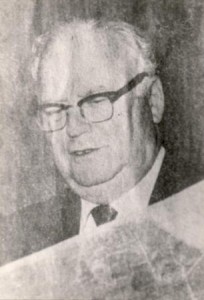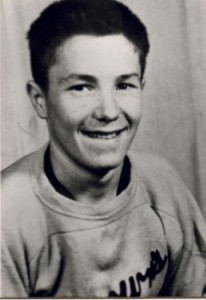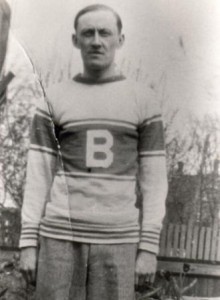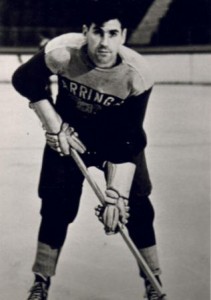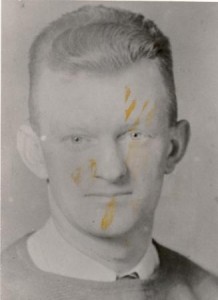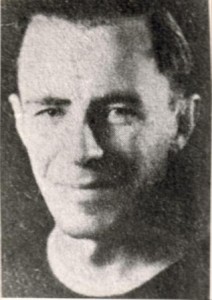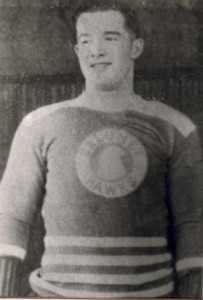 He was the most artistic body checker ever to perform for a Collingwood hockey
He was the most artistic body checker ever to perform for a Collingwood hockey
team and must be ranked with the best hitting defensemen of anytime-professional or amateur.
Bon in Newmarket but a resident of Collingwood for forty years, Dutch was the kingpin on the 1935 Collingwood Shipbuilders, winners of the O.H.A. Intermediate “A” championship.
Dutch played hockey under the principle that a good body check should be heard and not seen. There never was a better demonstrator of that principle.
“The bigger they are, the heavier they fall!” said Dutch, and during his career he dropped tons of hockey beef over scorers of arena ice surfaces throughout Canada and the United States.
He weighed only 155 pounds but the answer to his great hitting ability was in the
timing. Dutch never ploughed directly into the path of an onrushing forward. All he needed was a piece of him.
Cain played junior hockey in his native Newmarket and was a member of the Owen Sound Greys, Memorial Cup champions of 1924-25. That was quite a team-Cain, Cooney Weiland, Butch Keeling, Teddy Graham, Hedley Smith and Fred Elliot. The team picture of the Greys is in the Hockey Hall of Fame. Weiland Graham and Keeling went on to stardom in the N.H.L.
In the following years, up until 1928, Dutch played with Eveleth and Calumet in the old Central League. Calumet won the title in 1927.
A few years ago Cain was inducted into the United States Hockey Hall of Fame in Minnesota. Dutch returned to Canada in 1928 to help South Porcupine win the Northern Ontario senior title and then played on championship teams in the Eastern League with Baltimore Orioles and the Bronx Tigers. He was selected as the most valuable player in the league in the season of 1934-35.
He moved back to Collingwood in 1932 and was about to call it a career when he was
lured back into uniform by the late Walter Robinson, then coach of the Collingwood Shipbuilders. Dutch teamed up with big Jack Portland on the defense. Portland
was a good pupil and went on to a ten-year career in the N.H.L. his last season in 1935 was a winner.
Teaming up with playing-coach Bern Brophy, he helped Collingwood win the Intermediate title for the sixth time since 1910. He died the day after the founding of the Collingwood Sports Hall of Fame.

